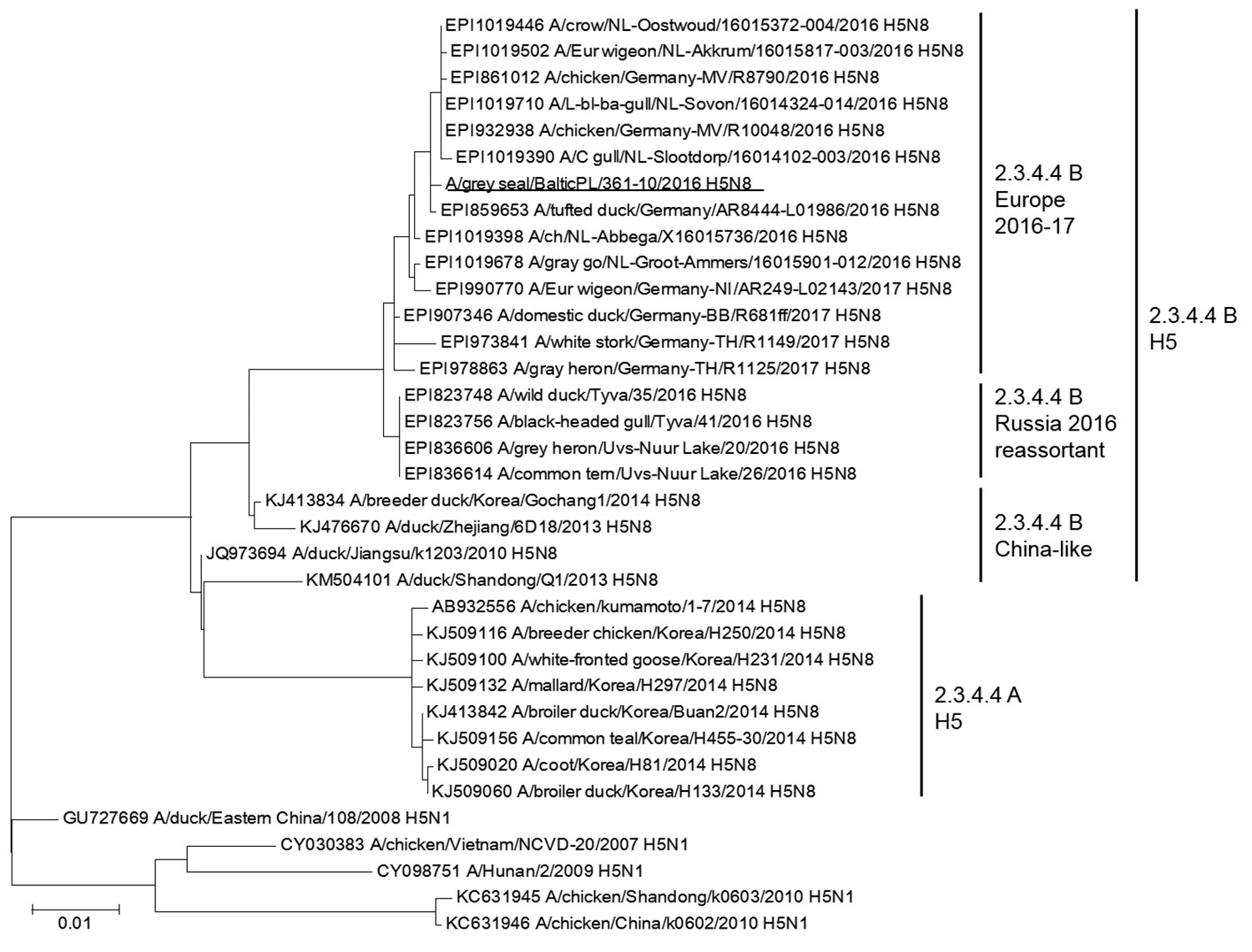Volume 25, Number 12—December 2019
Dispatch
Highly Pathogenic Avian Influenza A(H5N8) Virus in Gray Seals, Baltic Sea
Figure

Figure. Maximum-likelihood phylogenetic tree for the hemagglutinin genes of a highly pathogenic avian influenza A(H5N8) virus isolated from a seal in the Baltic Sea region of Poland (underlined) and reference sequences. Different clades and the subclades of 2.3.4.4 are marked. Accession numbers for reference sequences are provided; numbers beginning with EPI are from the GISAID EpiFLU database (https://www.gisaid.org), others from GenBank. Scale bar indicates nucleotide substitutions per site.
1Deceased.
Page created: November 18, 2019
Page updated: November 18, 2019
Page reviewed: November 18, 2019
The conclusions, findings, and opinions expressed by authors contributing to this journal do not necessarily reflect the official position of the U.S. Department of Health and Human Services, the Public Health Service, the Centers for Disease Control and Prevention, or the authors' affiliated institutions. Use of trade names is for identification only and does not imply endorsement by any of the groups named above.